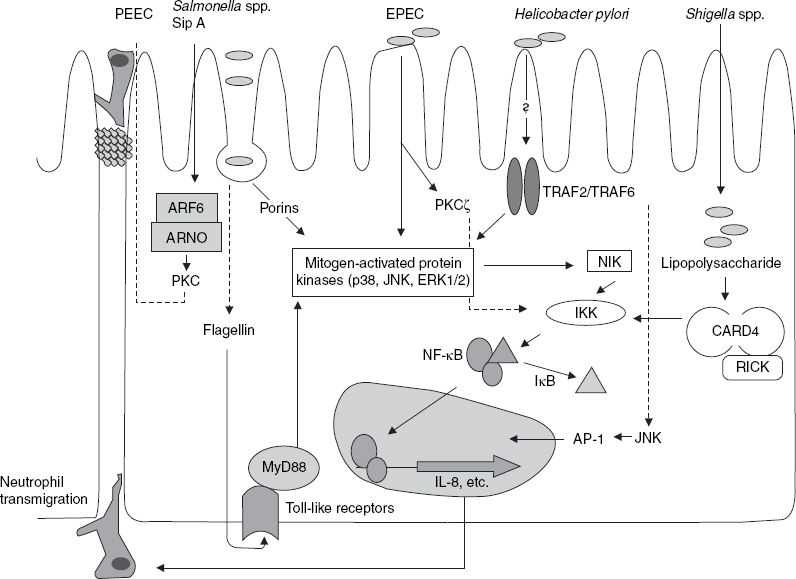Fig. 1.

The main enteric pathogen-induced proinflammatory pathway, which results in nuclear factor-κB (NF-κB)-mediated transcription of interleukin (IL)-8. Secreted IL-8 and other factors such as pathogen-elicited epithelial-derived chemoattractant (PEEC) stimulate the transepithelial migration of neutrophils to the lumen, where they target pathogens for destruction. The precise bacterial components involved in inducing an inflammatory response and the details of the signaling pathways involved have not been determined for all pathogens, but mitogen-activated protein kinases play a fundamental role in many of these pathways. Pathogen-associated molecular patterns (e.g. lipopolysaccharide and flagellin) induce a response by binding to cognate toll-like receptors to elicit a response. Non-IL-8-mediated proinflammatory pathways are also present in epithelial cells (reproduced from Berkes et al.,[21] with permission). AP-I = activating protein 1; ARF6 = adenosine diphosphate (ADP) ribosylation factor 6; ARNO = ARF nucleotide-binding site opener; CARD4 = caspase recruitment domain protein 4; EPEC = enteropathogenic Escherichia coli; ERK = extracellular signal-regulated kinase; IκB = inhibitory protein κβ; IKK = Iκβ kinase; JNK = c-Jun NH2 terminal kinase; MyD88 = myeloid differentiation primary response protein 88; NIK = NF-κB-inducing kinase; PKC = protein kinase C; RICK = receptor-interacting protein (RIP)-like interacting caspase-like apoptosis regulatory protein kinase; Sip A = Salmonella invasion protein A; TRAF = tumor necrosis factor (TNF) receptor-associated factor.
